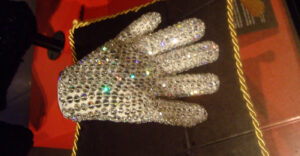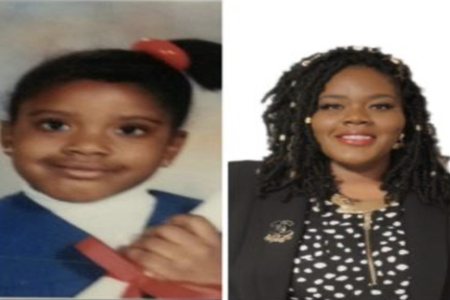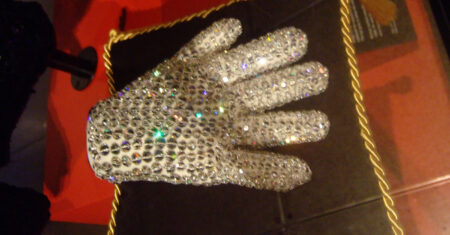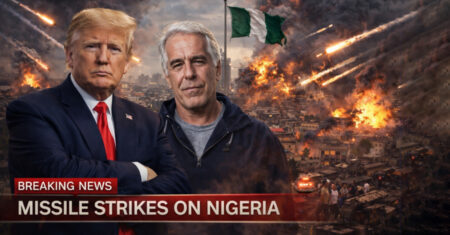This story was originally published by The Trace, a nonprofit newsroom covering gun violence in America. Sign up for its newsletters here.
For more than a decade, city leaders helped to prevent Chicago drill rapper Chief Keef from performing in his hometown.
In 2015, then-Mayor Rahm Emanuel felt so strongly that Keef was an “unacceptable role model” whose music “promotes violence” that he wouldn’t even let him perform via hologram. Emanuel’s affront echoed sentiments from critics — then and now — who argue that drill rap glorifies gun violence and criminality.
Drill is a subgenre of rap that originated on the South Side of Chicago in the early 2010s. It became known for its violent aesthetic and confrontational lyrics that chronicled street life on the South Side, playing into the curiosity and fear that surrounds gun violence. Media coverage of drill often focused on its controversies, like the killings of its artists or rappers’ public rivalries. City leaders responded by politically scapegoating drill, quickly designating the music a “public safety risk,” and forcing several artists out of Chicago.
So last June, when Keef took the stage at Lyrical Lemonade’s Summer Smash Festival in Bridgeview, a Chicago suburb, fans and music critics called it a breakthrough moment for the genre. It was his first time playing near his hometown since a set at Lollapalooza in 2012.
Drill has become one of Chicago’s most significant cultural exports, with artists in cities like New York, London, and Toronto forming their own offshoots. Keef’s homecoming symbolized Chicago’s evolving political relationship with the music. In the time since his public clash with the former mayor, a more nuanced conversation about the young artists who pioneered the sound has emerged.
In his new book Drill Rap, Sex Work, and the Digital Underground (Clout)Chasing on Chicago’s Southside, media scholar Jabari M. Evans offers a perspective on Chicago’s drill movement. Evans, who is from Chicago and a rapper himself, examines the movement through the lens of the tactics people use to gain influence online, known as clout chasing.
Evans positions Chicago drill artists not just as vanguards in music, but also within the history of the internet, showcasing how — through technological savvy and foresight — drill artists capitalized on social media audiences’ voyeuristic impulses for a peek inside Chicago’s most impoverished neighborhoods. During the height of the local backlash, the content drill rappers created was often taken at face value — believed to be literal confessionals of life, death, and crime on the South Side. And while the music grew from the structural inequities Black youth in Chicago have had to navigate, Evans argues that the lyrics’ most violent claims were actually a mix of the truth and clever marketing.
Evans’s book provides an empathetic lens that encourages readers to look past the spectacle. He shows that for many artists, drill became a path away from the violent conditions from which it emerged. His work shifts the focus from blaming Black youth for the violence they depict in their art to understanding how drill is both a reflection of the social forces that contribute to gun violence, and a precarious route away from it.
The Trace spoke with Evans about his new book and how drill helped change the larger conversation around gun violence in Chicago.
These answers have been lightly edited and condensed for clarity.
JA: Why did you choose to examine drill music through the framework of clout chasing?
I’m always thinking about innovative ways that Black youth in urban environments are using technological tools in ways that often aren’t highlighted or don’t give them credit for their ingenuity and in some cases, for their genius. In the context of drill, there’s this idea that these young people are very nihilistic or violent. Most of these youth are framed as gang bangers from communities that are disregarded in certain ways. As with almost everything, there’s a larger story.
What I’m arguing in the book is that, although clout chasing has this negative connotation, it’s also been very innovative. I focus on how many of these young folks use digital media as a strength and how the odds are against them to make something of themselves. With just a smartphone, they’ve figured out how to market, brand, and advertise themselves in ways that major billion dollar corporations haven’t figured out. That should be remarked upon just as much as the fact that maybe a shorty is holding a gun in a music video. That’s not the part of the story that’s most remarkable to me. The part that’s most remarkable is that these young people continue to defeat the internet, and it’s not an accident.
How has gun violence affected drill artists? Have there been impacts beyond death, surveillance, and incarceration?
Many of the people whom I spent my time surrounded by have either perished due to gun violence or gone to jail due to convictions related to gun violence. Gun violence has also had an impact on their mental health, from the stress of being bred or living in environments that are violent.
A viewer of the drill movement in Chicago might assume that artists were going viral because of the spectacle of violence they were promoting in their songs and on social media. But in the book you highlight that building their brand took a lot more work than just posting something shocking online.
There’s a reason why these young kids from Chicago were able to break through the noise. Chicago has a very unique scene that works well on the internet because of the mystique around the city and its gang life. But also Chicago is a very neighborhood-oriented city, so if one person represents the neighborhood, then the whole neighborhood is behind them. And they attack the internet in that way. Their entire clique is on the internet, promoting and sharing. It’s this digital underground, as I call it.
Chicago drill artists also chose to focus on creating content around their lifestyles and around their songs that appear authentic, but at many points are curated. At many points are exaggerated. At many points are a blend of reality and imagination. They have an understanding that everybody already believes the South Side of Chicago to be this dangerous place, and they’re just playing on that. These young people are like, “Well, they believe this is who we are anyway. They believe this is what our neighborhood is anyway, so that’s our ticket to success.”
They were very forward-thinking and realized, “Hey, we’re content creators just as much as we’re musicians, and so we need to always have content out there so that the algorithm can point back to us.” And that’s a strategy that all influencers use today.

I can think of several rappers who came up later and used these tactics to gain a following or infamy. But Chicago artists don’t really get credit for being the originators of that approach to hacking our algorithms.
Race, class, and gender are how we categorize people, so they’re not from the neighborhood that one looks at as having smart people. They’re not of a race that is looked at as being technologically savvy — although Black folks dominate and innovate trends on social media platforms. There’s still a thought that we aren’t smart as it pertains to STEM and tech.
Black men are already perceived to be angry, perceived to be violent, perceived to be a threat, perceived to be unruly with an inability to control themselves, so the savage stereotype is something they played upon in many ways, but it’s also a caricature. And because we assume that about young Black men, they get discredited as what they were doing wasn’t strategic. It’s seen as, “Oh, they’re accidentally going viral.” If that was the case, then everybody would be doing it. There were a lot of people trying to be Chief Keef when Chief Keef came out. But they didn’t work.
In the book, you touch on the idea that drill rap was both a reflection of the tough realities many of these young people were forced to navigate and a pathway out of those conditions.
Most of the artists I interviewed viewed getting into the music industry as their most viable means of earning a living that’s legitimate. It’s like this is the thing that plays to the strengths that I carry, the interests that I have, the passions that I have, and it’s the most believable and authentic to myself. It’s a double-edged sword because the price of that infamy can be costly. Dissing your opps might put you in a position where those oppositions might want to cause harm. It may turn into something that’s real and takes shape to your well being offline.
But for these young people, clout chasing is a risk worth taking because the thought is well, I’m sequestered, and I’m in this environment regardless, so I may as well try something that I like doing that is going to make me get to where I want to go quickly and that isn’t breaking the law even. I can either try to make something of myself or not. But either way it goes, I’m surrounded by what I’m surrounded by, so it doesn’t matter.
You write that drill music and specifically Chief Keef’s ascent into the mainstream “influenced the national conversation about violence in Chicago.” Tell me more about how his rise changed that conversation.
There was a narrative around Chicago being a violent place that was already there. But drill became not just the soundtrack, but in many ways served as almost like a CNN for their neighborhood and what was going on. Who was beefing with who. Showing the energy of what’s going on in these specific environments, and actually getting to see these environments because they were shooting the videos in their neighborhoods.

Are there any solutions to the gun violence crisis in Chicago that you’ve gleaned from researching/writing about the drill movement?
If I truly had a solution, I would be a billionaire. Even so, I would say that solving unemployment as well as the educational achievement divide would greatly help. Approaching low-income communities of color from a strengths perspective is ideal for prevention. I think a lot of time is spent seeking to design interventions and that isn’t sustainable.
There has continued to be an emphasis on the violence that surrounds drill. Is there anything else you want to add about newer ways to look at this movement that grew from the South Side of Chicago and has become a global music genre?
When you better understand the systems and the structures that make a neighborhood or an environment the way that it is, then you can have empathy for those who grow up within it, and can also learn to respect that humanity a lot better.
There is real-life violence going on in Chicago, but I feel like that story has been told enough. If we’re just gonna use violence in Chicago as a means to get viewership, to get ratings, or to just tell the same old tale without telling the story with the hope of providing solutions or actually changing the circumstances or the systems, then what’s the point?
What my work is always seeking to do is to go beyond just saying, hey, for lack of better terms, it’s fucked up over there. OK, well, what are we doing to fix it? And why are we blaming the young people when they’re not the ones who created the circumstances that they’re in? Drill is just a response to the circumstances that these young people have been placed in.
The post How Chicago drill artists hacked the conversation about gun violence appeared first on The TRiiBE.







